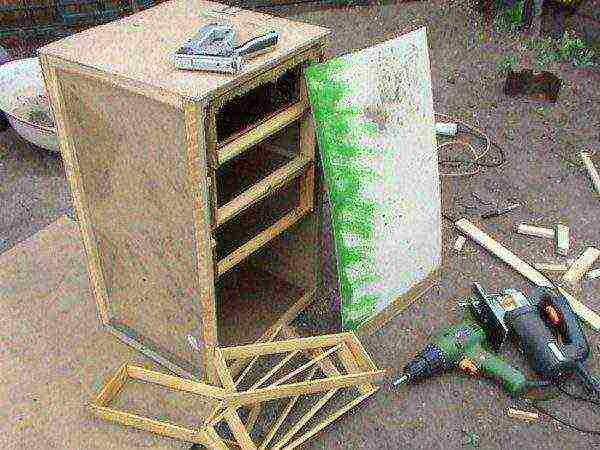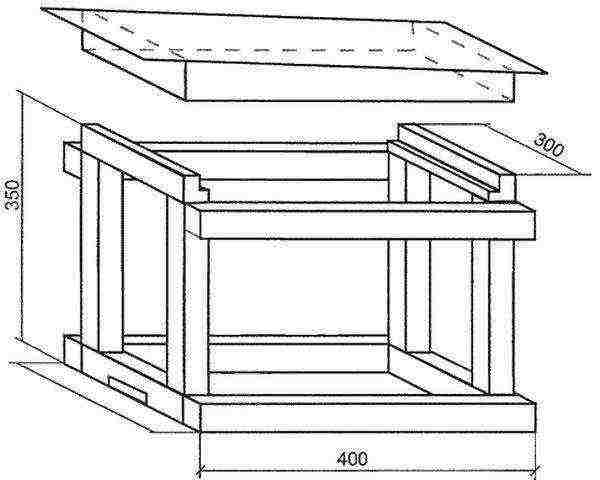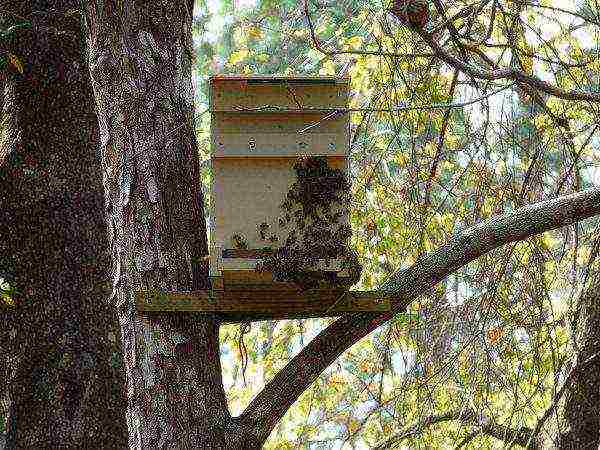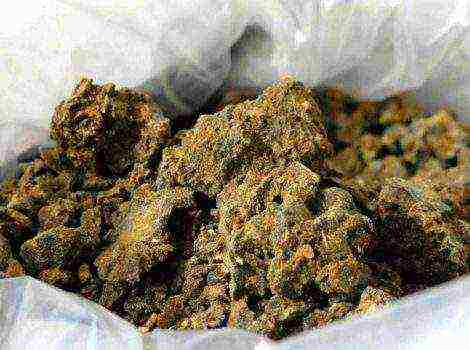Content
How to make a DIY bee trap
While swarming, the queen with her bee family is looking for a new home. Then the time comes when some beekeepers lose their bees, while others replenish the apiary. Special devices - bee traps - will help to multiply the number of honey insects in the apiary. Knowledgeable beekeepers often build them with their own hands from scrap materials, using blueprints.
In this article, we will tell you how to make a do-it-yourself bee trap according to the drawings, how to make a trap out of plywood and a bottle.
Why are traps set
When a bee colony, with a queen over two years old, is not busy with work (honey collection), they begin to prepare for swarming. This process is natural and instinctive, and beekeepers, in turn, must resort to many tricks. If this action is not noticed, then the bee colony will begin to swarm.
The swarm can fly from a neighboring or neglected apiary, or it can fly many kilometers in search of suitable housing Is a wandering swarm. Beekeepers value these bees for their high-quality performance, and set traps for catching these families.
It is at such moments that a do-it-yourself swarm trap is needed.
What a bee trap looks like
The classic bee trap is a plywood or fiberboard bee trap that:
- has a bolt, with its help, you can easily and tightly close the bees in the trap when it is time for transport;
- you can make it yourself, or you can find a suitable one on the farm;
- fits frames, a couple of them with honeycombs for bait;
- equipped with only one tap holedesigned to enter insects.
Manufacturing for a standard plywood frame
Before starting installation, you need to prepare the material:
- plywood (thickness 4 mm);
- wire;
- rope (10 m);
- slats;
- piece of canvas;
- nails;
- boards (20 cm wide and 2 cm thick);
- pins (4 mm in size);
- insulating material (polyethylene or roofing material);
- glue;
- sheet polystyrene.

Tools:
- furniture stapler;
- drill;
- chisel;
- a hammer;
- drill;
- saw.
Manufacturing of the case
The technology is as follows:
- the bottom is constructed from planks two centimeters thick;
- the rear and the front of the catcher are assembled from the same slats;
- a gap is cut out in the front wall so that the largest bee can climb through it. In most cases, its dimensions are 10x100 mm;
- the walls are attached to the bottom;
- with the help of rails, side bases are made;
- parts for the upholstery of the box are prepared from a sheet of plywood;
- sides are sheathed with plywood;
- on the side walls inside, slats are attached, on which the hangers of the frame will lie;
- finish the body assembly.
You will also be interested to know:
- What to do with a bee sting.
- How to determine the quality of honey and its naturalness.
- Useful properties of honey for men and women.
The cover of the structure is similar to the roof of a conventional evidence. Manufacturing example:
- a quadrangle is drawn on a sheet of plywood so that its dimensions are 1 cm larger than the box itself;
- this part is being prepared;
- slats are nailed along the edges so that the part can be firmly planted on the base of the catcher;
- the foam is processed with glue and applied to the bottom of the lid;
- the top of the part is sheathed with roofing material or cellophane;
- the cover is fixed to the body;
- a handle for the trap is being prepared from the wire. It is needed to transfer the structure and hang it from a tree.
In the finale, the final touches:
- frames fit into the structure. One or two frames with honeycombs are placed in front, and the next ones with foundation. The maximum number is five frames;
- they are covered with a cloth;
- the entrance is treated with propolis. You can use lemon balm or basil, they are also great at attracting bees.
Fiberboard bee trap
This drawing of a fiberboard catcher contains 6-8 frames. Starting to manufacture, the necessary material is prepared:
- drying oil;
- Fiberboard;
- dark green paint;
- bars 40 mm wide and 25 mm thick.
Do-it-yourself method for making a device according to drawings
The principle of making a swarm trap from various materials is practically the same:
- parts for the walls are cut from the finished fiberboard sheet. This is easy to do, all dimensions are indicated in the drawing;
- a bend is made using rails to establish frames. It is attached to the top of the front and rear of the hull, making a recess on the beams.

- For this, it is better to use a folded bevel cutter;
- slats are attached to the front and back walls;
- make a slot for the taphole armhole on the trap facade;
- attach the side strips to the front and rear walls;
- prepare a place for planting the lid.
For this:
- fix the longitudinal bars to the side walls (the top bar should be 40 mm below the edge);
- make roof sheathing from slats;
- instead of ceiling boards, you can use a sawn piece of fiberboard;
- form a roof from fiberboard parts so that visors are obtained at the back and front;
- at the end, the trap must be impregnated with linseed oil. To make the structure less visible, a coat of dark green paint can be applied.
Preparing a bee trap is not the end. It must be safely caught and transferred to a permanent one in the hive. To do this, you should remember a few tips:
- place structures early, because scout bees have been looking for a place to live in two to three weeks;
- periodically it is necessary to watch the traps... If you notice bees near the entrance (at least 15), then a family in someone's apiary or a swarm of wild bees is preparing to fly;
- you can climb a tree and listen to the hive;
- when you are sure that the family has already settled in the trap, you need to close it;
- this should be done at sunset, when all the bees are at home;
- deliver bees to the apiary;
- return the trap, if necessary, without forgetting to rub the notch, as well as the front wall from the inside.

Bottle trap
Often, beekeepers resort to a different type of trap, which is needed not to catch swarms, but to destroy harmful pests. The conversation is about wasps - dirty tricks that give beekeepers and bees a lot of trouble. These insects are active even in cold weather, and often enter bee houses to steal honey.
The beekeeper is obliged to monitor this, otherwise the consequences can be fatal for many hives. That is why a bottle bee trap is made. The size of such a trap is small, but it does the necessary work.
No special drawings and materials are needed to make it. You must have:
- plastic container;
- scotch tape or wire;
- awl;
- knife.
It is easy to make a trap correctly. Cut off the top of the bottle and set it back with the neck down.The bait is placed inside and the device is secured in the appropriate place. The principle of capture is as follows: a wasp enters the trap through a funnel, but does not find a way out, constantly stumbles upon a modified cone.

Drone trap
You can also make your own drone trap. The device is made from wire. It consists of two sections, between which a barrier is mounted, which has 2 ends of a fine mesh. A dividing grid is installed in front. Drones will not be able to pass through the grate and fall into the upper net, unable to get out of there. It is a trap.
There they can collect up to one liter. Soon everyone dies and must be thrown away. If swarming continues, the trap is reinstalled. If the queen is caught, you need to hang the structure and wait until the bees gather around it in a ball. Only then can they be transferred to the hive.
Capturing a bee colony is the most essential experience in the work of a beekeeper. Wildlife honey insects often die due to lack of adequate housing or lack of food. Therefore, bees need traps more than beekeepers themselves.


